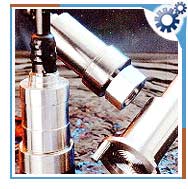 History
History Larger horsepower engines have evolved because technological advances have reduced the cost of manufacturing higher horsepower engines. Daniel, product manager of residential and commercial mowing products for Kuboto Tractor corp. concurred that larger horsepower and hydrostatic transmissions have been significant design trends on riding units. Then, later Orelich and Steiner cited the advent of hydrostatic drives.
Characteristics
Hydrostatic drives require up to 40% less energy than hydraulic designs due to their parallel running drives. They have superior reliability and lower maintenance. They are unmatched in terms of strength and traction. Power for the system is provided by a constant pressure variable volume pump that ensures full torque at any speed. They are specifically engineered for a lifetime of low-speed, high torque operation - operating equally well in either direction.
The dual path hydrostatic drive is also engineered to maintain a 2:1 power ratio speed when steering. Each side has components sized to accommodate high horsepower so larger blade loads can be pushed through curves and the operator can easily compensate for blade draft.
Control
The drive is controlled by a single lever with electronic straight tracking, two bumps up, bump down speed buttons with six speed increments, and an adjustable ratio of reverse to forward speed. To move forward, push the lever forward and for reverse motion, push the lever backward. The system protects power train components and brakes when the machine is operating on steep grades. The system senses travel speed during downhill operation and cautions the operator.
Applications
They are widely used in double drum vibratory roller. The machines with these hydrostatic drives are popular for asphalt works like construction and maintenance of pavements, shoulders, walking and cycling tracks, access and parking areas, sports and playgrounds, forestry and estate roads. They are used for digging chain and cutting wheel drive motors. Other applications include drives for conveyor and auger system, marine winches and mining equipment. They are used in continuous operation in a wide range of heavy-duty drive applications.